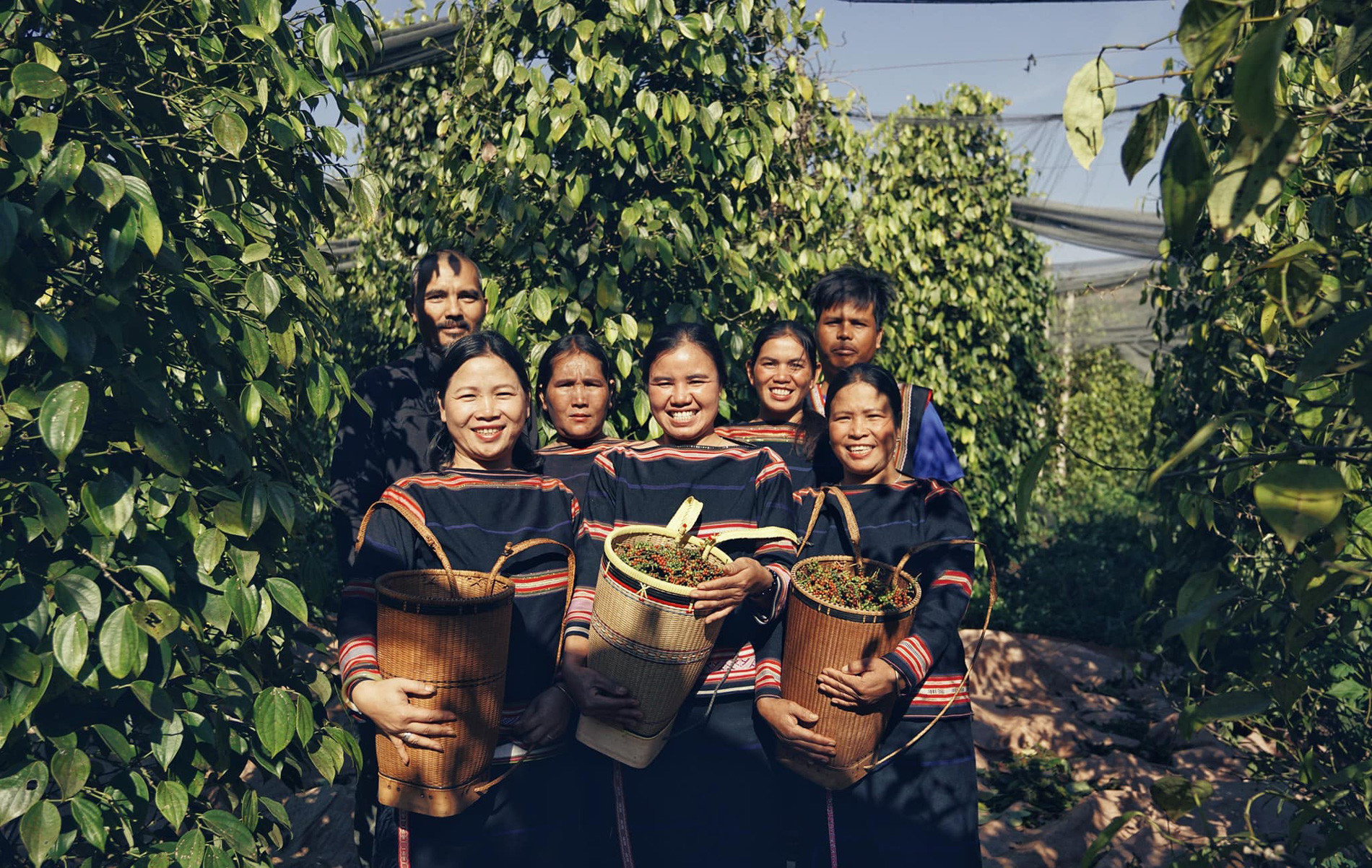
Farmers in Xuan Loc, Dong Nai are busy harvesting pepper. The yield is lower this crop, but the prices are high.
Pepper is collected at VND92,000-95,000 per kilogram, much higher than the VND34,000 per kilogram in March 2020, and 25-30 percent higher than the same period last year.
Tran Cao Thang, a farmer in Suoi Cao commune, told VietNamNet that the output is about 3.5 tons.
Pepper prices vary, depending on the quality. High-quality pepper is traded at VND100,000-102,000 per kilogram.
Having 2.5 hectares of pepper in Ba Ria – Vung Tau, Nguyen Van Hung estimated that he would have 8 tons of pepper this crop.
As the prices have soared from VND63,500-66,000 per kilogram the same period last year to VND95,000 per kilogram, Hung can make a profit of VND600 million.
Phan Ngoc Toan in Bu Dang district of Binh Phuoc province is happy about the price increase. It is estimated that one hectare gives output of 13 million tons, or 4 tons of dry pepper.
Toan has been growing organic pepper for a few years, and selling prices are 30 percent higher than normal pepper, and profit of VND700 million is within reach.
At HCM City Ports, black pepper (500g/l) was exported at $3,900 per ton on February 27, while white pepper was at $5,700.
Vietnam’s average pepper export price in February was $4,082 per ton, another increase of 2 percent compared with January and a sharp rise of 35.9 percent compared with February 2023.
In the world market, Vietnam’s pepper accounts for 40 percent of output and 60 percent of export market share.
Hoang Thi Lien, chair of the Vietnam Pepper and Spice Association, said Vietnam has topped the world in pepper exports over the last 20 years.
Analysts all predict that the global pepper market will be bustling with pepper prices standing high.
Among the biggest pepper producers, Brazil’s harvesting season has ended, while Vietnam has begun harvesting. Meanwhile, Indonesian and Malaysian harvesting season will come in July.
Vietnam’s pepper yield is expected to be the lowest in the last five years, while supply from other countries is not high enough to offset the output decrease.
This is reflected in Vietnam’s pepper exports in the first two months of the year. With export volume of 35,000 tons, Vietnam earned $143 million, which represented a 12.3 percent decrease in export volume, but a 12.9 percent increase in export value compared with the same period last year.
New golden age?
Hoang Phuoc Binh, deputy chair of the Chu Se Pepper Association in Gia Lai province, predicted that pepper prices may climb to VND120,000-150,000 per kilogram.
“The new price increase cycle has begun,” Binh said.
Watching the pepper price performance over many years, Binh said that every price increase cycle lasts about one decade.
The latest cycle lasted from 2006 to 2015, during which prices soared from VND16,000 per kilogram to VND220,000. At that time, farmers could make a profit of VND560-700 million.
Binh believes that pepper prices may fluctuate, but will be on the rise and won’t decrease to low prices as seen recently. The new price increase period may last 12-15 years.
“The pepper prices may bounce back and the golden days will come back. The prices may reach VND300,000-350,000 per kilogram,” he said, adding that the pepper growing area in Vietnam has decreased because prices dropped dramatically several years ago and farmers shifted to other crops.
The other reason behind the price increases is the output decrease in Vietnam and other pepper growing countries caused by climate change.
“Previously, pepper prices were sky high, which prompted farmers to expand growing areas. Now the prices are high, but it is difficult to expand growing areas because of limited land,” he explained.
“The pepper price keeps increasing, while the global output is decreasing, which will keep prices high in upcoming years,” he said.
Le Hoang Tai, deputy head of the Vietnam Trade Promotion Agency (Vietrade) under the Ministry of Industry and Trade (MOIT), said that pepper demand is predicted to increase and demand to be especially high from the US, the EU and the Middle East.
Tam An